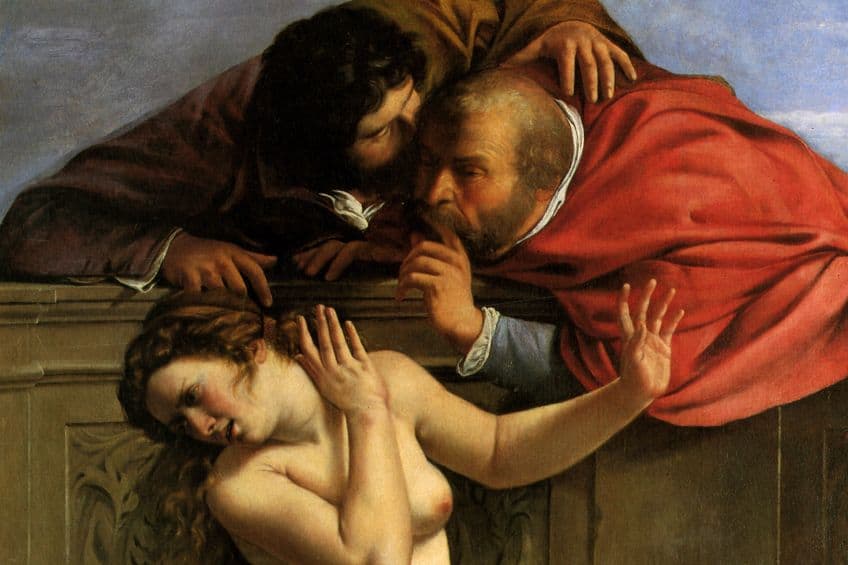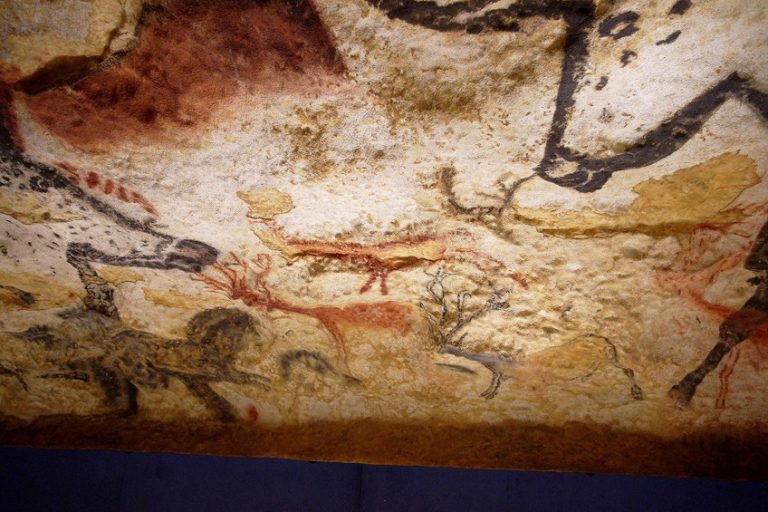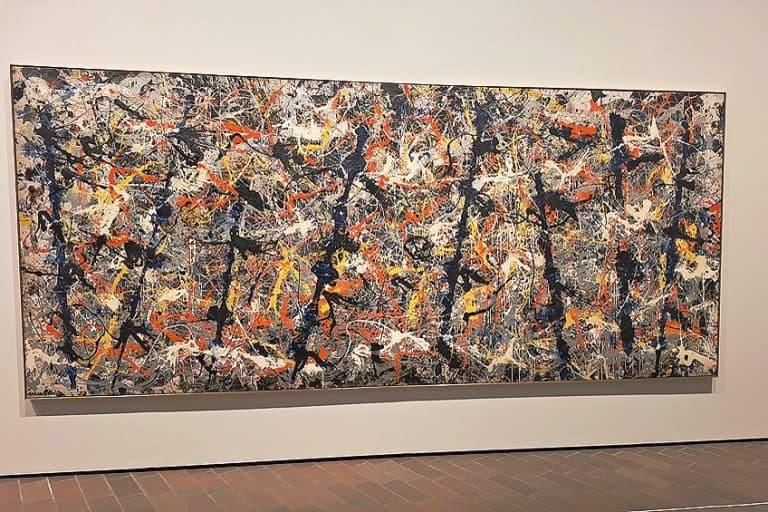“Susanna and the Elders” by Artemisia Gentileschi – An Analysis
The Biblical tale of Susanna and the Elders has been widely depicted in paintings throughout art history. It was also mostly painted by men. But what happens when a female paints this subject? This article will explore Susanna and the Elders (c. 1610) by Artemisia Gentileschi, who was one of the foremost female Baroque artists of her time.
Artist Abstract: Who Was Artemisia Gentileschi?
Artemisia Lomi Gentileschi was born on July 8, 1593, in Rome and was believed to have died between 1652 – 1656 in Naples. She painted within the Italian Baroque art style and started painting from an early age with tutelage from her father, Orazio Gentileschi, who was also an artist. She became one of the first accomplished female artists of her time and received various commissions.
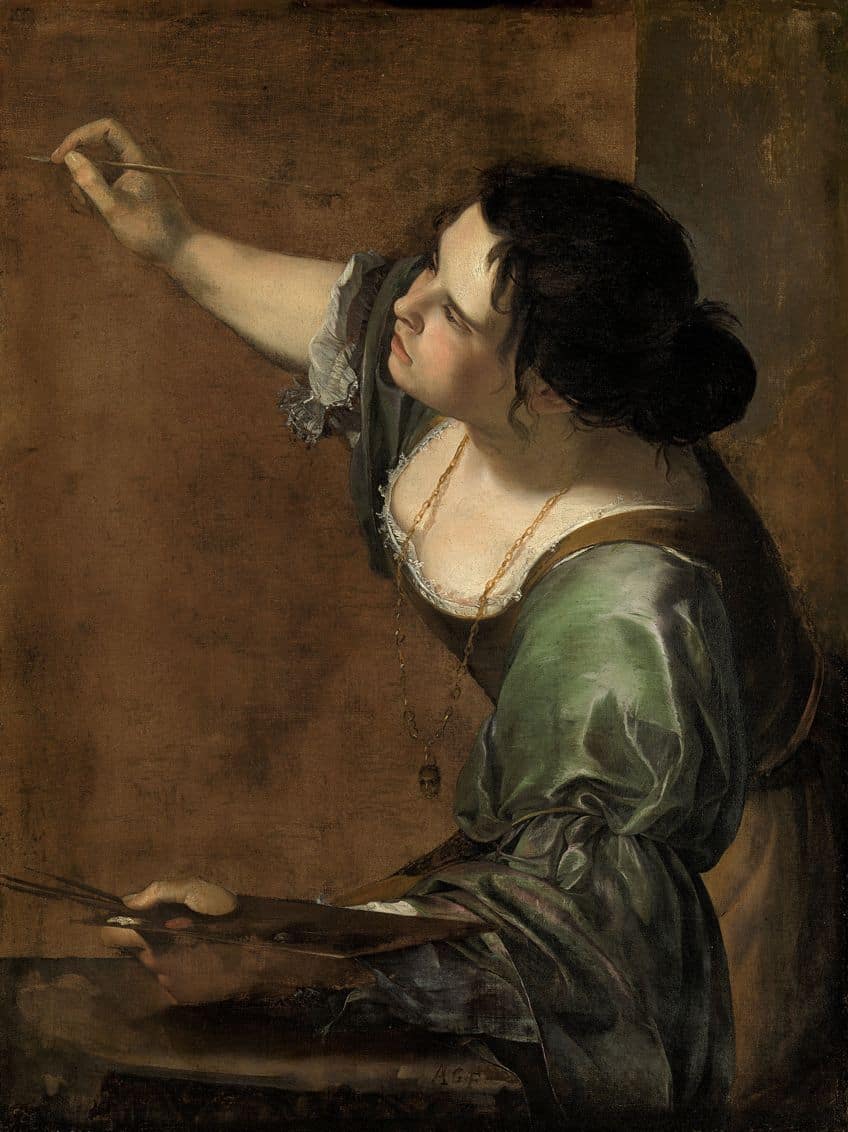
Her artworks are known to depict topics of female empowerment, which can be tied to her own experiences as a woman, notably her experience of rape when she was 17 years old, including her realistic portrayals that subverted the traditional modes of representation of her time. Examples of her artworks include Judith Slaying Holofernes (c. 1620), Mary Magdalene (c. 1620), and Lucretia (c. 1620 – 1621).
Susanna and the Elders (c. 1610) by Artemisia Gentileschi in Context
The article below will discuss the Susanna and the Elders painting analysis with a historical overview of why the artist, who was Artemisia Gentileschi, painted it and what circumstances from her own life can be interpreted from the subject.
| Artist | Artemisia Gentileschi |
| Date Painted | c. 1610 |
| Medium | Oil on canvas |
| Genre | History and Religious painting |
| Period/Movement | Italian Baroque period |
| Dimensions (cm) | 170 x 119 |
| Series/Versions | N/A |
| Where Is It Housed? | Schloss Weißenstein, Pommersfelden, Germany |
| What It Is Worth | The price is uncertain |
Contextual Analysis: A Brief Socio-Historical Overview
Susanna and the Elders by Artemisia Gentileschi were painted when the artist was still a young woman, around 17 years old. She gained experience as a painter by working in her father’s workshop; her father was Orazio Gentileschi, an Italian painter. Understanding the artist’s life and art will undoubtedly lead to the tales of her sexual encounter between 1611 to 1612. She was raped by one of her father’s associates, Agostino Tassi when he reportedly visited her at her home. He was eventually convicted and released from prison.
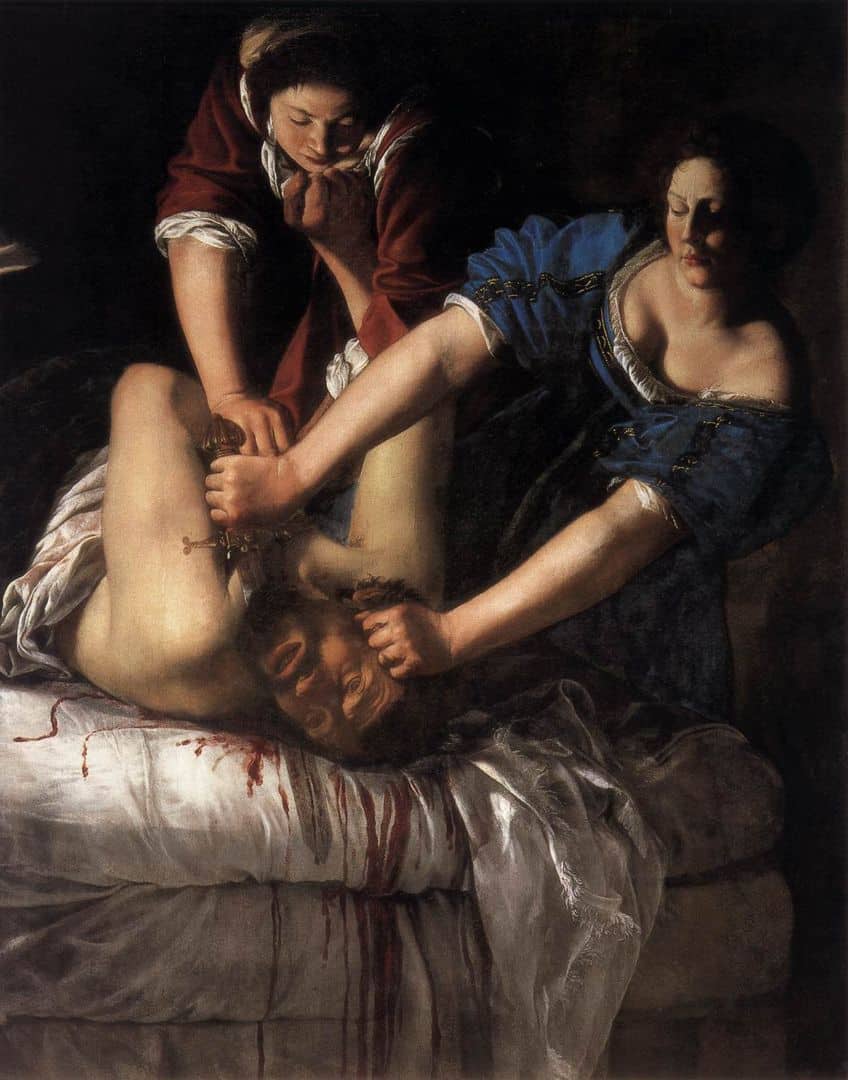
Some scholarly texts have mentioned that Gentileschi’s sexual assault has become such a large focal point for the artist and particular types of subject matter that she is seemingly identified by it. Her accolades and skills as an artist are easily overlooked or overshadowed by her rape. However, while this article discusses her early sexual encounter to provide valuable contextual understanding, it also shines a light on Gentileschi and her prowess as a female artist who lived in a male-dominated art world.
Importantly, Gentileschi also painted Susanna and the Elders before her rape by Tassi.
This has led to numerous questions about why the artist painted the subject of Susanna, and some sources suggest that she may have experienced sexual advances from Tassi before the rape. Otherwise, she could have experienced other forms of harassment from other men. However, this is based on conjecture.
Who Was Susanna?
Susanna was a woman from the apocryphal Book of Daniel, mentioned in Chapter 13. Reportedly, this Biblical tale is found in the Orthodox and Catholic Bibles. As a married woman, Susanna was upright in her faith and known to be beautiful. The story follows her being lusted over by two men, known as the Elders. They would watch her in her garden. One day, the two men decided to hide in her garden and meet her there. She decided she wanted to bathe and sent her maidservants to get her “oil and ointments”. The men revealed themselves to her when she was alone and told her she must sleep with them because they were in love with her.
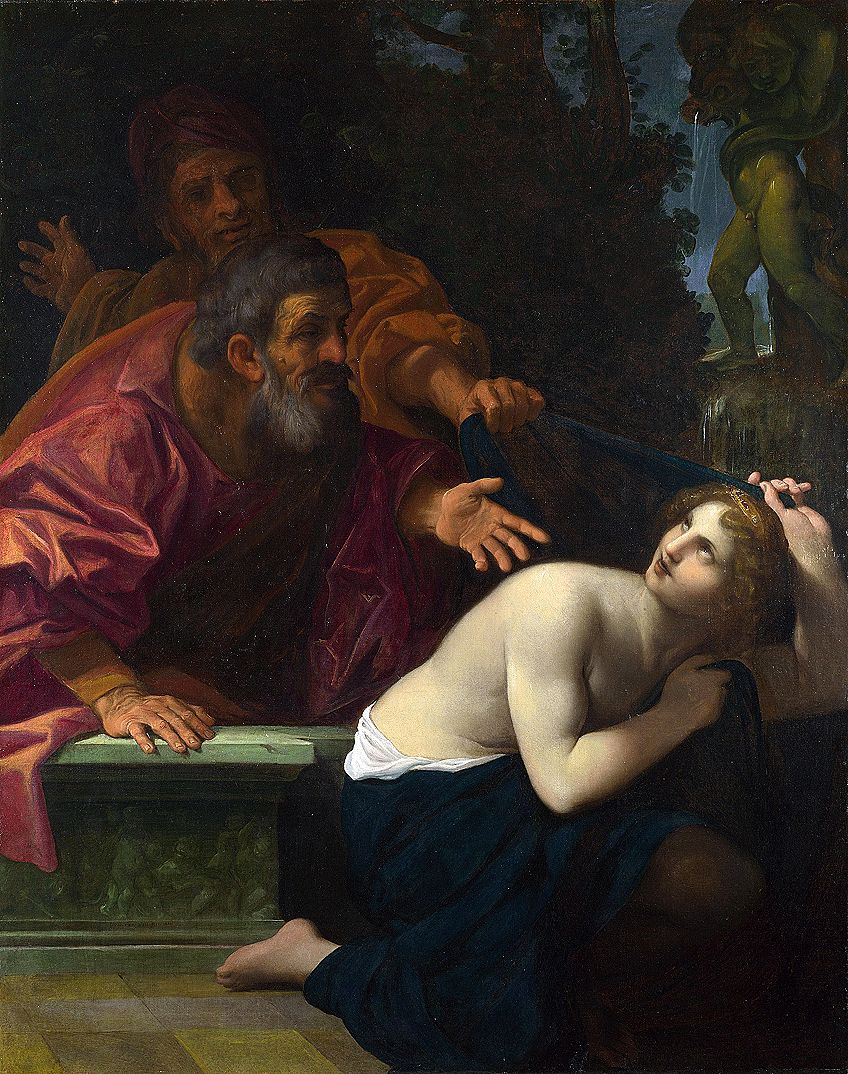
The two elders also threatened her and told her if she refused them, they would accuse her of sleeping with a younger man, stating that is why she sent her maidservants away. She denied them their lustful desires and accepted her fate because she would not dishonor God. She was falsely accused and sent to her death, but Daniel spoke out and ordered that the two men be questioned. He asked both what tree they saw Susanna and her alleged lover under.
The one elder answered under a “Mastic tree” and the other an “Evergreen oak”. Susanna’s innocence was restored, and the two elders were found guilty.
Formal Analysis: A Brief Compositional Overview
In the formal analysis, you will read more about Susanna and the Elders by Artemisia Gentileschi through a visual description of the subject matter and how the artist composed the piece according to the art elements, namely, color, texture, line, shape, form, and space.
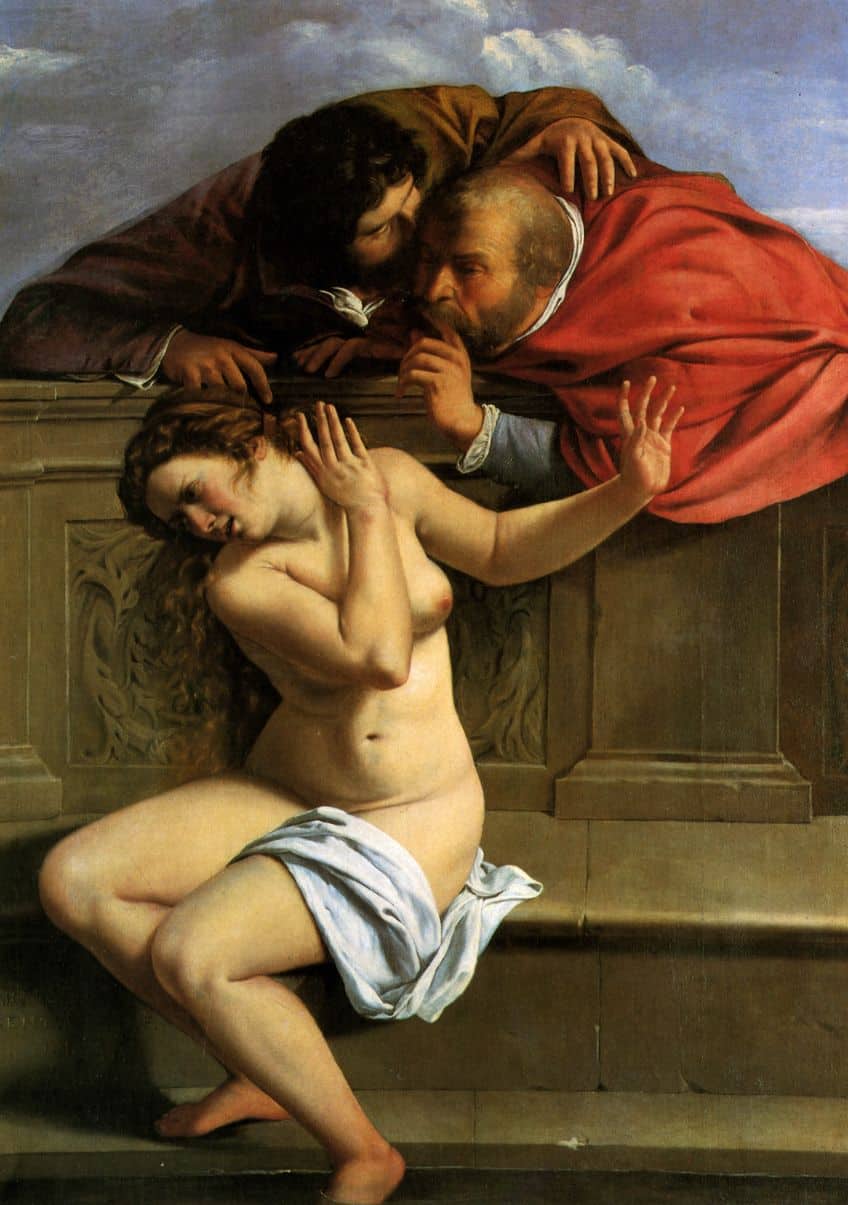
Subject Matter: Visual Description
The painting Susanna and the Elders depicts the scene of Susanna being accosted by the two elders. Susanna is depicted in the nude and sitting on a large bench with a high back leaning. She is positioned more to the left side of the bench, leaving the right side of the bench as open space.
There is a white piece of fabric over her upper left thigh (the viewer’s right) and she is leaning to her left (the viewer’s right) with both hands raised in resistance to ward off the two men behind her.
The two elders are depicted behind the high back leaning of the bench, they are both hunched and huddled over its edge. The man on the viewer’s left appears in brown and he seems to be whispering something into the other man’s ear. The other man is to the viewer’s right, and he is wearing a red overcoat and has his left index finger to his mouth. His gaze is on the woman in front of him.

Visible in the background is part of the blue sky with white clouds. There is no other indication of the surrounding environment around the main three figures, which makes them the main focal point of the composition. Susanna’s body posture appears resistant and almost irritated at the two men who are harassing her. It is evident that she is not comfortable, and the men appear persistent in their body postures.
Color
Artemisia Gentileschi depicted a naturalistic color scheme in her Susanna and the Elders painting. Susanna is depicted with a fair skin tone and the subtle red blush of her cheeks are noticeable. She has a deep reddish hair color, which blends with the shadows cast by the men behind her including her own shadow on the bench.
Gentileschi’s utilization of chiaroscuro is evident in this composition, notably by the unknown light source on Susanna, which creates emphasis on her as the primary focal point, and the men who appear more in the shadows.
This difference in light and dark creates a contrasting and dramatic effect between Susanna and the men, which could also point to the Susanna and the Elders meaning that Gentileschi sought to convey.
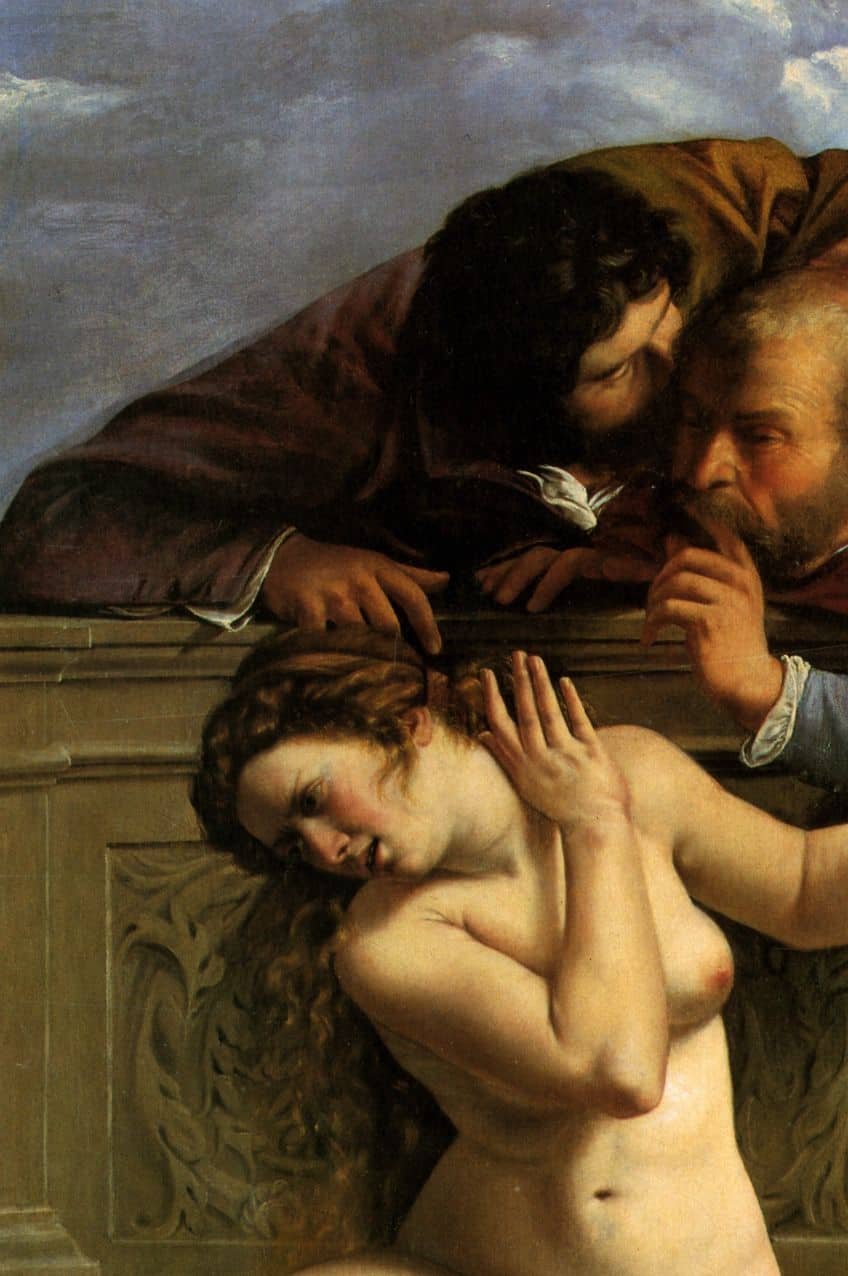
Texture
Artemisia Gentileschi depicted the subject matter in the Susanna and the Elders painting as naturalistic. Her smooth brushstrokes on the canvas imply different textures, for example, the softer folds of the white fabric and the men’s clothing, including the softer and more voluptuous folds of Susanna’s skin. The softer textures are contrasted with the harder texture of the brown bench, which appears to be made of stone or wood. Notice the chip in the bench’s lower step, which gives the impression of its wear and tear.
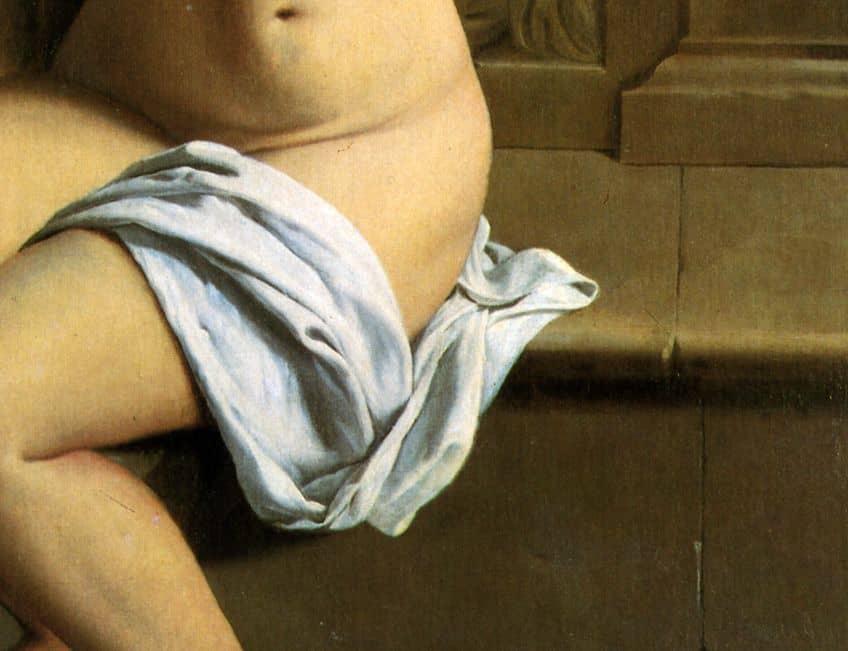
Line
There are a variety of naturalistic lines delineating the subject matter in the Susanna and the Elders painting. Additionally, Gentileschi created a sense of directional lines that lead us, the viewers, to gaze toward her sitting on the bench, highlighting her as the focal point.
The hunched figures of the men create a sense of movement towards Susanna and her raised arms and hands create a further sense of dynamism and dramatism and lead our gaze towards the men.

Shape and Form
The Susanna and the Elders painting is composed of naturalistic (otherwise sometimes called organic) forms. Artemisia Gentileschi was known for her realism in her artwork. She created a three-dimensional composition through other art elements like color and value that accentuates the naturalistic forms. For example, Susanna’s voluptuous female figure. There is also a slight contrast of shapes and forms, evident in the more geometric patterning of the bench versus the curvature of Susanna’s figure.
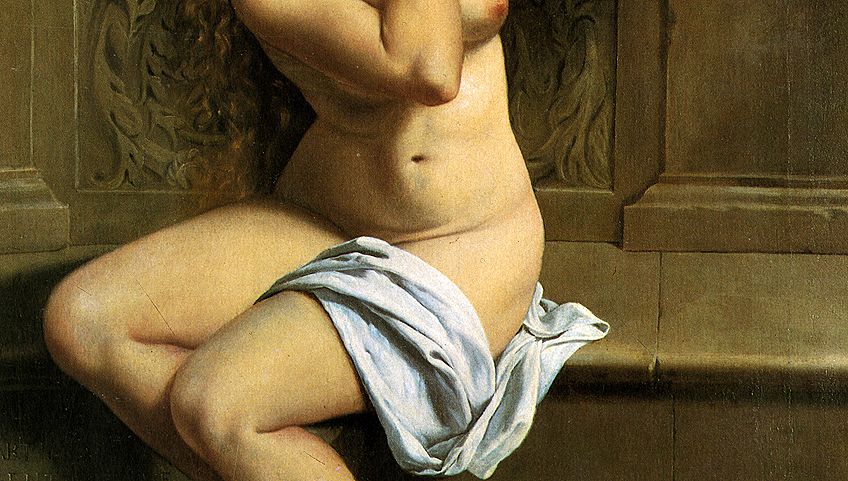
Space
Artemisia Gentileschi depicted the subject matter in an enclosed space, for example, the figures are close to one another and there are no other distracting objects. There is a small section of the step in the direct foreground, as if we, the viewers, can step into the scene, which creates emphasis and dramatism.
Additionally, Gentileschi created an open space next to Susanna, creating a sense of tension and further emphasizing the action taking place.
Furthermore, Gentileschi did not convey a large expanse of the sky above, and the two men appear in front of the sky-filled background, which creates a sense that the background is of secondary importance compared to the main focal points in the foreground.

Artemisia and Susanna: A Female Duo
The painting, Susanna and the Elders, meaning is about victimization, innocence, and being steadfast in the face of temptation. Artemisia Gentileschi depicted these qualities in her rendition of this Biblical tale. Through Susanna’s posture and expression, the artist remained true to how Susanna reacted in the story. However, Gentileschi also conveyed her artistic acuities, notably the female figure, which was a popular subject to paint during her time.
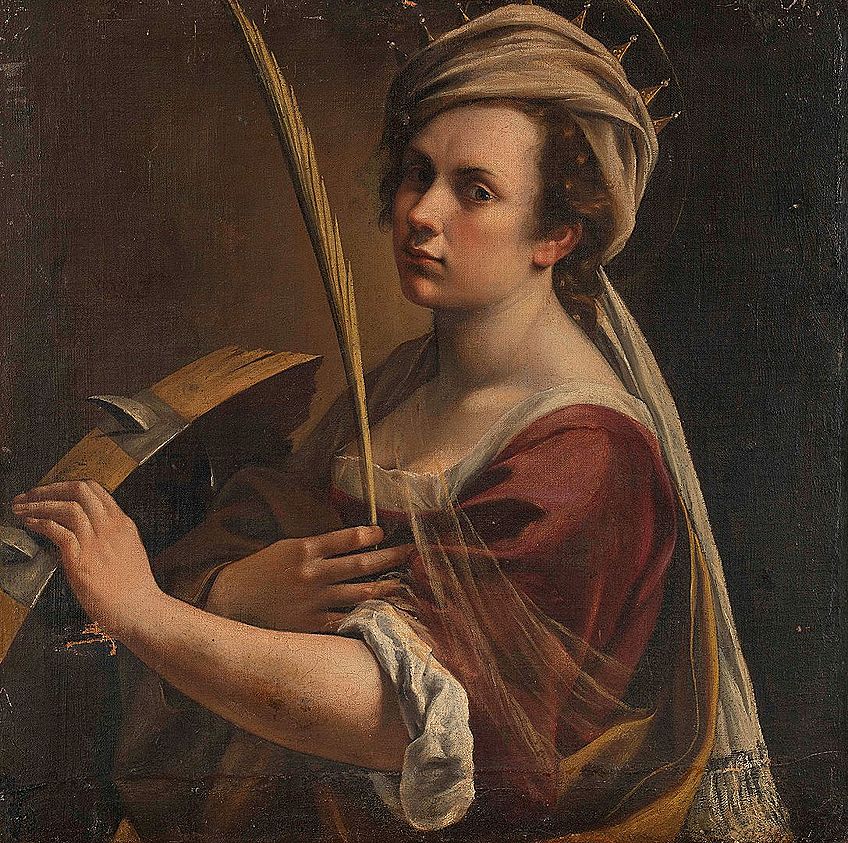
This “Susanna and the Elders” painting analysis explored Artemisia’s and her protagonist, Susanna’s, life in more detail. Although the two women were wholly different, they both seemed to share similar experiences regarding sexual harassment, being victims, but ultimately also victors.
Frequently Asked Questions
Who Painted Susanna and the Elders?
The Baroque artist Artemisia Gentileschi painted Susanna and the Elders (c. 1610). It is an oil on canvas and measures 170 x 119 centimeters. It is a religious/historical painting depicting the story of Susanna from the Book of Daniel in the Bible.
Where Is the Susanna and the Elders Painting Located?
The oil on canvas by Artemisia Gentileschi titled Susanna and the Elders is part of the collection at the Schloss Weißenstein in Pommersfelden, Germany.
What Does Susanna and the Elders Mean?
Artemisia Gentileschi’s Susanna and the Elders meaning is conveyed through the story of Susanna being harassed by the two elders, which is found in the Book of Daniel. The portrayal has often been believed to allude to the artist’s own experiences of harassment, although it is important to note that it was painted before she was raped by Agostino Tassi.
Alicia du Plessis is a multidisciplinary writer. She completed her Bachelor of Arts degree, majoring in Art History and Classical Civilization, as well as two Honors, namely, in Art History and Education and Development, at the University of KwaZulu-Natal, South Africa. For her main Honors project in Art History, she explored perceptions of the San Bushmen’s identity and the concept of the “Other”. She has also looked at the use of photography in art and how it has been used to portray people’s lives.
Alicia’s other areas of interest in Art History include the process of writing about Art History and how to analyze paintings. Some of her favorite art movements include Impressionism and German Expressionism. She is yet to complete her Masters in Art History (she would like to do this abroad in Europe) having given it some time to first develop more professional experience with the interest to one day lecture it too.
Alicia has been working for artincontext.com since 2021 as an author and art history expert. She has specialized in painting analysis and is covering most of our painting analysis.
Learn more about Alicia du Plessis and the Art in Context Team.
Cite this Article
Alicia, du Plessis, ““Susanna and the Elders” by Artemisia Gentileschi – An Analysis.” Art in Context. June 15, 2023. URL: https://artincontext.org/susanna-and-the-elders-by-artemisia-gentileschi/
du Plessis, A. (2023, 15 June). “Susanna and the Elders” by Artemisia Gentileschi – An Analysis. Art in Context. https://artincontext.org/susanna-and-the-elders-by-artemisia-gentileschi/
du Plessis, Alicia. ““Susanna and the Elders” by Artemisia Gentileschi – An Analysis.” Art in Context, June 15, 2023. https://artincontext.org/susanna-and-the-elders-by-artemisia-gentileschi/.


